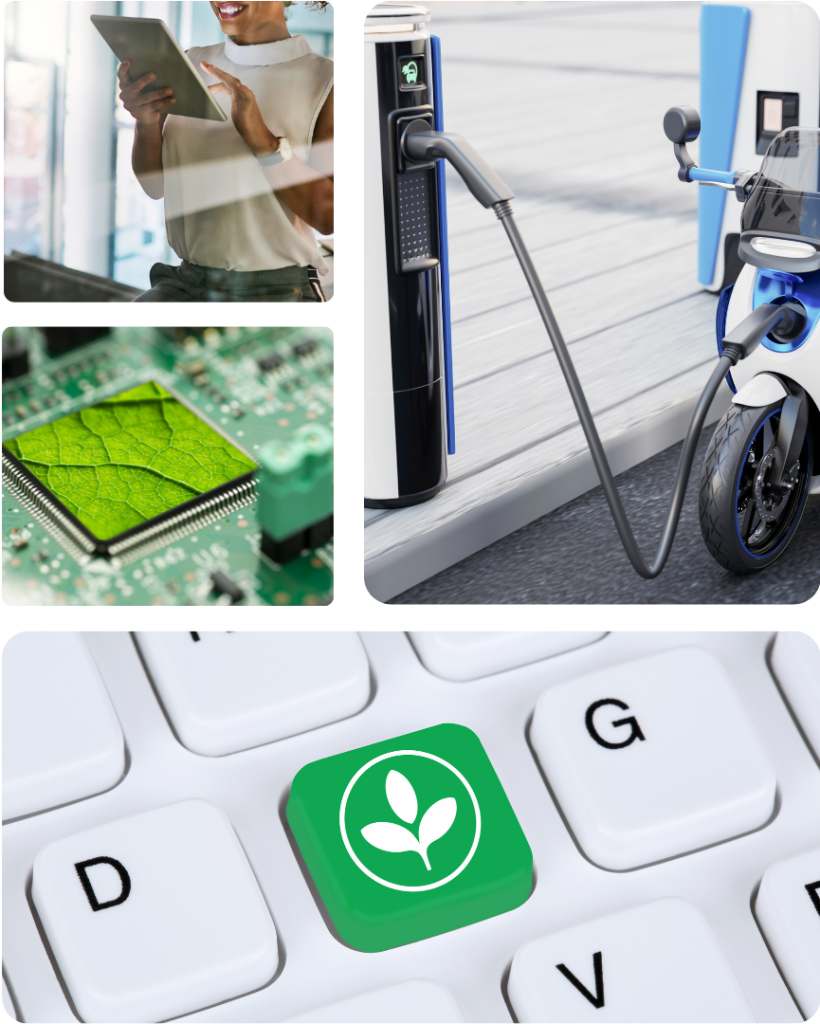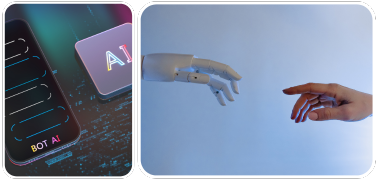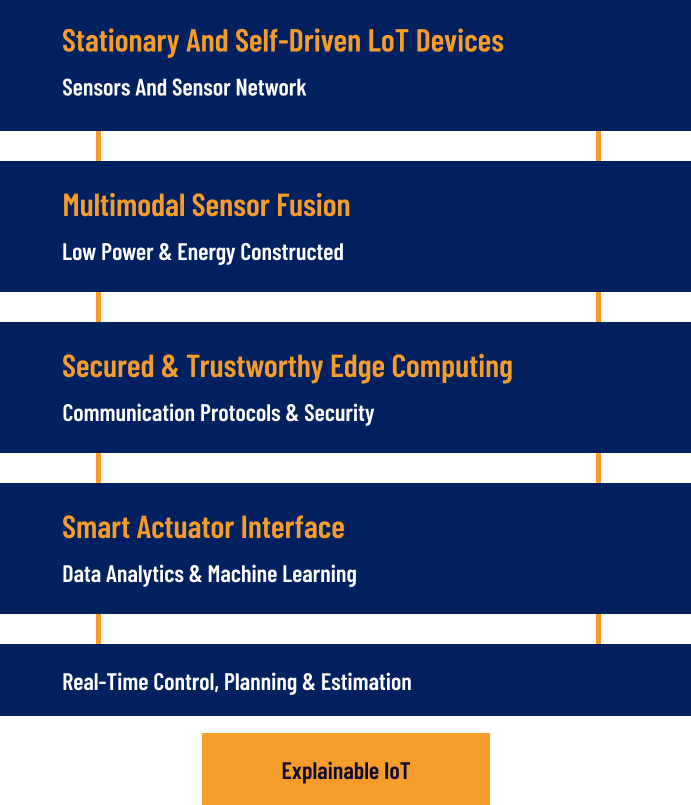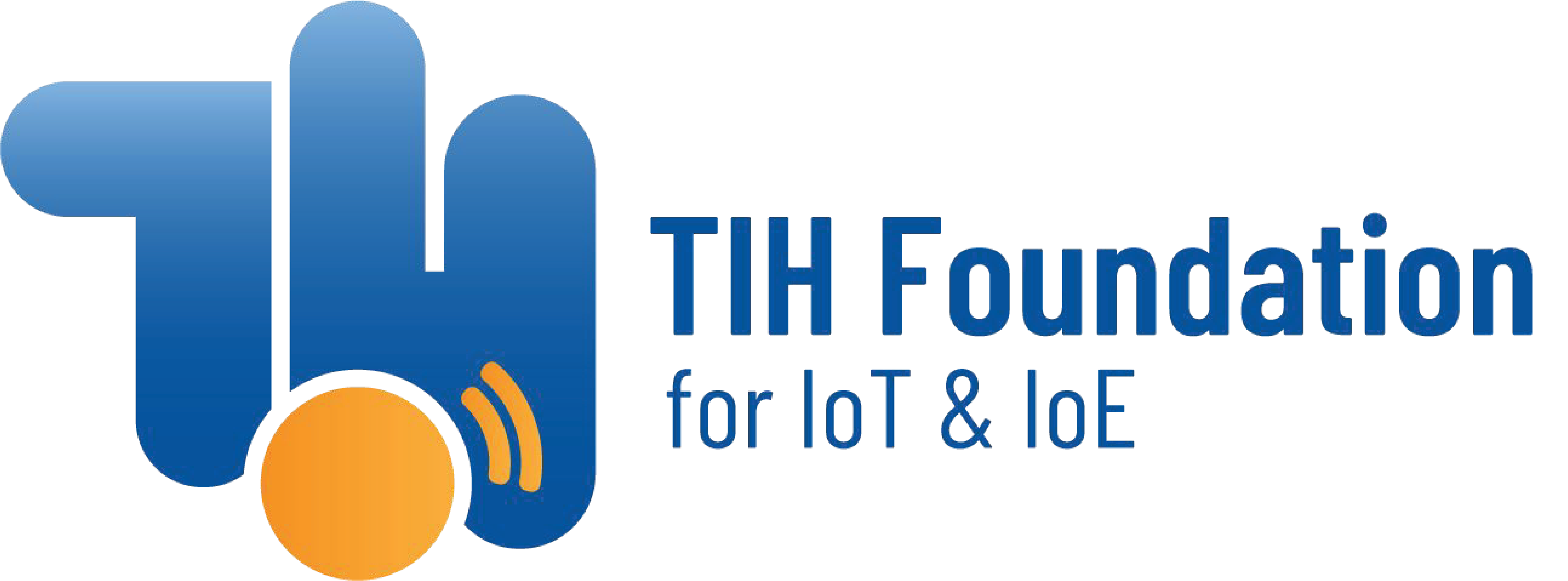Core Technologies

Core Technology
Technology & Communication
- The Internet of Things describes a network of interconnected “things” or electronic devices that are equipped with sensors and computing capabilities and can communicate with one another.
- These devices are embedded in a great variety of edge applications, such as modern smartphones, industrial monitoring and control systems, or autonomous vehicles. As the uses of IoT become more advanced, however, the requirements for their usage become stricter.
- For instance, industrial control systems that begin to incorporate IoT technologies need these additions to be reliable for continuous operations, or businesses may be put at risk of disruption and significant revenue loss.

Research & Development
Identify core IoT technologies for eco-friendly, reliable solutions through edge computing to foster R&D and address challenges.

Edge Computing
These technologies target on addressing challenges reliable IoT, Eco-friendly IoT and easy to develop IoT together by giving solutions through edge computing.

Multidisciplinary Tech
The multi-disciplinary technical verticals of IoT are Sensors & sensor network, Low power & energy constrained devices, Communication protocol & security, Data analytics & machine learning and Real-time control, & estimation.

Multidisciplinary Expertise
Innovative and distinct technologies that have large impact through its applicability in multiple use-case and aimed at building core and unique multidisciplinary expertise.

Cloud Computing
While solving the problems through edge computing, the carbon footprint is likely to have significant reduction as compared to the cloud computing methods.
Core Technology
Data analytics & AI learning
The multi-disciplinary technical verticals of IoT are Sensors & sensor network, Low power & energy constrained devices, Communication protocol & security, Data analytics & machine learning and Real-time control, planning & estimation.
The challenges arising from integration of these technical verticals along with the challenges mentioned above are addressed through the development of following core technologies

- Stationary and self-driven IoT devices
Be able to reach to a user-defined location, collect data and return autonomously. Autonomous navigation of robots requires an accurate knowledge/estimate of its attitude and position in 3D-space.
The objective in this work is to implement an estimation scheme that uses sensors mounted onboard the moving component to estimate its position relative to its launch/home position. Based on these estimates and onboard sensor data, the robot then returns to the docking position (stationary component).
- Multi-Sensor Fusion Toolbox for Edge Computing
Range of devices (or a single device) that is capable of interfacing variety of sensors and interpretation can be programmed based on state estimation or AI/ML methods. The IoT technology consists of two levels of designs; system-level and device-
level. To provide a generic algorithm to various classes of use-cases wherein each IoT device comprising multiple sensors are used. Therefore, objectives are defined as follows:
a) Categorization of cases depending on the data collection frequencies and communication rate.
b) Providing analyzing tools for data interpretations through state estimation parameters.
c) Providing tools for checking feasibility of a use-case based on IoT structure design under various categories.
- Secured and trustworthy edge computing
A miniature programmable interface that any IoT developer can interface and ensures no potential risk to physical safety and cyber security. Recently, there have been several instances of attacks on IoT systems by intruders, e.g., information theft, Denial-of-Service (DoS) attacks, etc. Hence, the communication among IoT devices needs to be secure. The objective is developing a miniature programmable interface that any IoT developer can interface and ensures no potential risk to physical safety and
cyber security.
- Smart actuator system
An interface that provides energy consumption estimates and has self-diagnostic features. A smart actuator is an integrated actuator that includes onboard controls, communication capabilities, position control and feedback, and fault detection. This makes the actuator easy to install, use, program, and monitor, while eliminating the need for external controls.
Objective is to develop smart actuator interface with integrated hardware and technology beyond those of a standard actuator interface that provides energy consumption estimates and has self-diagnostic features.
Core Technologies

Figure: Integration of Technical Verticals and their
corresponding objectives
The core technology that is integration of technical verticals and their corresponding objectives are as follows:
- Self-driven IoT device: Be able to reach to a user-defined location, collect data and return autonomously
- Self-powered IoT device: Energy harvesting wireless communication and system design
- Multi sensor fusion: Range of devices (or a single device) that is capable of interfacing variety of sensors and interpretation can be programmed based on state estimation or AI/ML methods
- Smart actuator interface: An interface that provides energy consumption estimates and has self-diagnostic features
- Secured and trustworthy edgy computing solution: A miniature programmable interface that any IoT developer can interface and ensures no potential risk to physical safety and cyber security.
